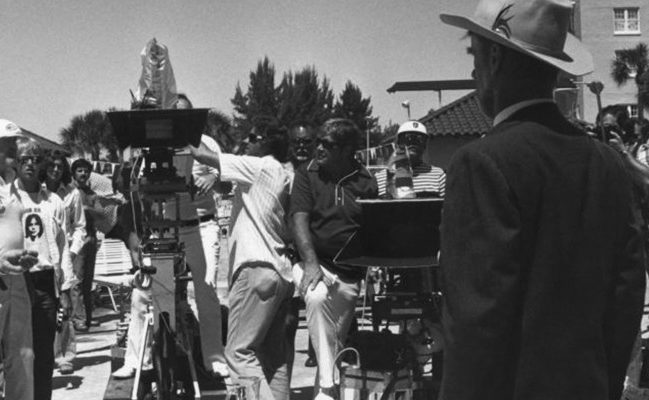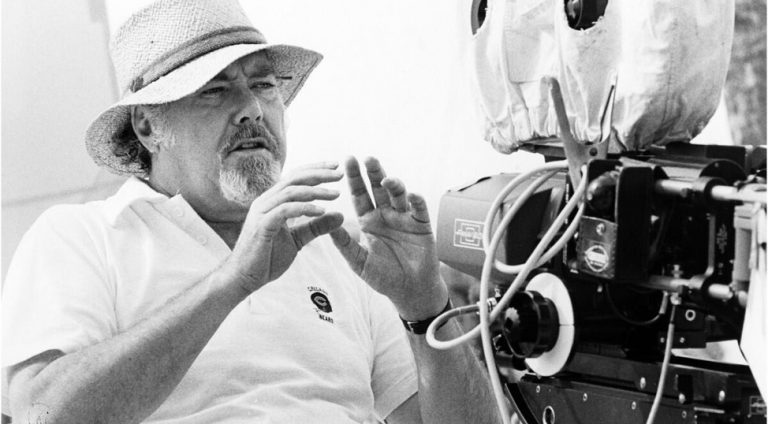I recently watched the documentary Altman, which chronicles the works of maverick American filmmaker Robert Altman. From a hired director of industrial films in the 50s to recipient of an Academy Honorary Award for Lifetime Achievement in 2006, the film cycles through his oft-celebrated filmography, pausing to reflect on watershed masterpieces like McCabe & Mrs Miller, Nashville, M*A*S*H, The Player, Short Cuts and Gosford Park. The movie talks about how he had bucked the Hollywood system and broke all rules of film narrative to create a cinematic language and legacy all his own. Don’t know who he is? Check out Meryl Streep and Lily Tomlin’s delightful tribute to Altman at the 2006 Oscars.
I grew up watching many of Altman’s films. But watching this documentary a few nights ago I was struck by how much of my approach to the creative process, and the approach we adopt at antics@play, has been influenced by him. I had subconsciously “Altmanesque”-ed our creative philosophy. The term has been used to describe the filmmaker’s trademark stylistic predilections, including overlapping dialogue, a restless camera, an ensemble cast, spontaneity, improvisation and a touch of impudence.

At antics@play, we obviously don’t have a cast of hundreds, but we are an ensemble effort nevertheless. Everything we put together is a beautiful collision of influences and ideas…from the strategist, the client servicing manager, the creative director and the designer to the hapless pizza delivery guy. Each brings to the table his or her unique gifts and perspectives (and if nothing else, lunch). Sometimes conversations happen all at once, sometimes not at all. Like a typical Altman film, we start from the same jump-off point, but as the project develops–be it brand or advertising or PR–a colourful cast of characters weaves in and out, sometimes influencing ideas and decisions, sometimes not at all. But the process seems so real, so present, so necessary. If it all sounds a bit chaotic, it can be. There is no typical approach to project development here. We don’t colour by numbers. Like Altman, we like to colour outside the lines. We thrive on spontaneity and improvisation – the bedrock to our play methodology. That’s how we liberate our minds to capture the ephemeral. They support the twin pillars of play and creativity, one of which cannot exist without the other. And the outcome is almost always amazing.
Like many improvisational directors, many creative directors seldom like to stick to the script, but will always start with one. And sometimes getting your cast into a room, giving them a scenario and then watching things unfold…that’s magical. It’s important however to know when to call “cut”, when to let the camera linger for just that little bit longer, and when to jump in and give notes. You need to direct it but not too much…just to a point where you know how to stitch it all together into the final product, while still giving cast members ample room to flex their creative muscle and grow new ones. Is this the best approach? Maybe not. But it is a helluva great one. One thing you cannot take away from the legendary director and this Altmanesque approach is that it is very much about the process and not just the final product. At antics@play, we are very much about the process too. The process inspires the team and inspires the client. It helps them push beyond themselves, and the merits of that surely outlast any foot cream or deodorant we sell.
In the film Altman, many Hollywood luminaries who’ve had the fortune to work with the director, such as Paul Thomas Anderson, Robin Williams, Bruce Willis and Julianne Moore, attempted to define the term “Altmanesque”: “Inspiration”, “rebel”, “human”… they go on and on. Many such adjectives they proferred surely captures not only the works of a late great master but the collective aspirations and the lifeforce of all creatives out there.






